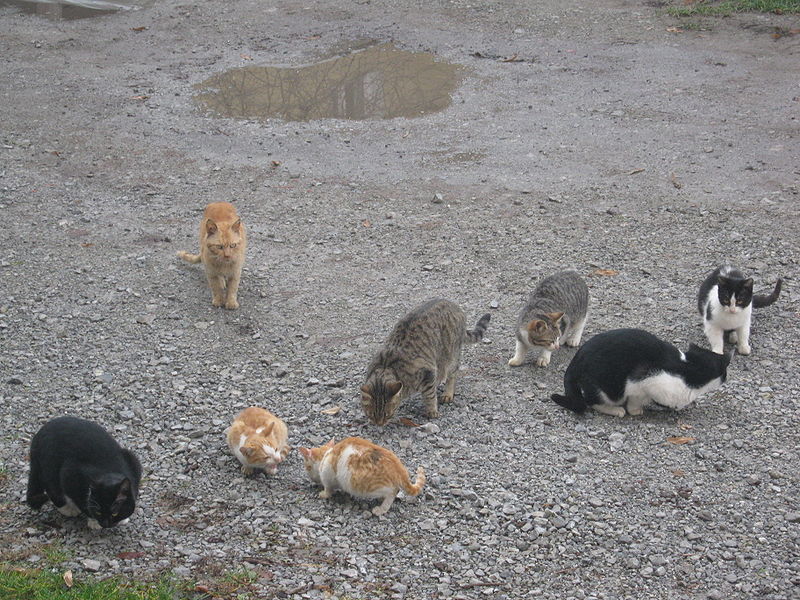What is the disease? Brachycephalic obstructive airway syndrome (BOAS). This is a common disease among the flat-faced dog breeds, especially pugs, bulldogs, and Pekinese. These dogs have been bred to have flatter, more human-like faces, but as their muzzles have shortened, the soft tissue in the back of their mouths has not. They are left with excess tissue in the back of their throats which significantly blocks airflow (elongated soft palate). They also often have tiny nostrils (stenotic nares). These two physiologic handicaps together cause so much resistance in the path of the air moving from nose to lung that eventually the inside of their throat can become further deformed, increasing the resistance to airflow (everted laryngeal saccules).
 | |
| Points used to measure the length of a dog’s skull (A,B) and muzzle (B,C). Compare the labrador retriever’s B,C length (top) with the pug’s (bottom). |
So yes, this makes it hard to breathe, and if you want to see for yourself, try this experiment: squeeze your nostrils shut so that only about 1/4 of the normal space is left. Keep your mouth closed. Now exercise. And imagine breathing that way for your entire life.
I think it is probably a lot like when you are very congested and trying to sleep: you can’t sleep with your mouth open, but when you close it you can’t get enough oxygen. A lot of these dogs constantly pant in order to get enough air. 100% of them snore at night, and 32% snore while awake, compared to 21% of normal dogs who snore at night. The noises pugs make are certainly unusual — when I walk in to a veterinary clinic I know if a pug is in the room before I see it. A lot of people find these noises cute. What these researchers found surprising was how many people found the noises normal.
Normal for the breed, that is; the owners who stated that their dogs did not have respiratory disease wrote things like “No, but he is a pug!” Breed-specific problems have come to be considered not problems simply because they are expected. I have had veterinarians tell me that they recommend dogs for corrective surgery for BOAS simply based on the breed. When I asked one surgeon what criteria she had used to recommend surgery for our six month old patient, she replied, “He’s a bulldog.” (Those owners agreed to the surgery, but initially hesitated because they were concerned that widening their dog’s nostrils would change his appearance.)
Where to place the blame? I feel that veterinarians are doing very little to make this problem clear to owners (as much as we will shake our heads in despair in the back room when the owner is not around). One of my daily tasks in veterinary school was to write up an assessment of the health status of my patients. If I had a flat-faced patient with loud breathing, I would certainly note that in my list of physical characteristics. But I did not include it in my list of problems which needed to be addressed. The dog was invariably in the hospital for some other problem, and I knew that I’d be considered obnoxious, if not a troublemaker, if I called out this other problem which everyone was aware of and no one was trying to address.
I’ll do better in the future, and I hope that other veterinarians will start talking more to their clients about the reality of the problems these dogs face. It is upsetting that a veterinarian can refer an owner to a specialist for dealing with BOAS without making clear to the owner that the dog has a disease. Just because the dog has always had the problem, and just because the problem was intentionally selected for, does not mean it is not a disease. Dog owners need to start pushing back on breeders and buying only puppies who breathe quietly (awake and asleep!). Breeders need to start selecting for somewhat longer muzzles, long enough that dogs can breathe properly.
And the dogs who are already out there with breathing problems? If your flat-faced dog makes loud noises when he breathes, particularly when he is awake, he probably isn’t breathing comfortably. If your primary care veterinarian doesn’t think your dog has a problem, get a second opinion from a veterinary surgeon (someone who preferably has a title ending in “DACVS” to indicate that they are a surgical specialist). Dogs who can’t breathe comfortably don’t have a good quality of life. It seems obvious, but sometimes we need to say it.
Packer, R. (2012). Do dog owners perceive the clinical signs related to conformational inherited disorders as 'normal' for the breed? A potential constraint to improving canine welfare, Animal Welfare, 21 (1s) DOI: 10.7120/096272812X13345905673809



